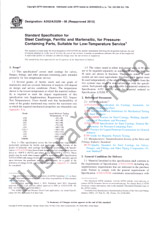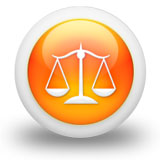Potřebujeme váš souhlas k využití jednotlivých dat, aby se vám mimo jiné mohly ukazovat informace týkající se vašich zájmů. Souhlas udělíte kliknutím na tlačítko „OK“.
ASTM D7007-16
Standard Practices for Electrical Methods for Locating Leaks in Geomembranes Covered with Water or Earthen Materials
Automaticky přeložený název:
Standardní postupy pro elektrické metody k vyhledání netěsností v geomembranes pokryt vodou nebo zemní materiály
NORMA vydána dne 1.1.2016
Informace o normě:
Označení normy: ASTM D7007-16
Poznámka: NEPLATNÁ
Datum vydání normy: 1.1.2016
Kód zboží: NS-625249
Počet stran: 13
Přibližná hmotnost: 39 g (0.09 liber)
Země: Americká technická norma
Kategorie: Technické normy ASTM
Kategorie - podobné normy:
Anotace textu normy ASTM D7007-16 :
Keywords:
construction quality assurance, electrical leak location method, geoelectric leak location, geomembrane, leak detection, leak location,, ICS Number Code 59.080.70 (Geotextiles)
Doplňující informace
| Significance and Use | ||||
|
4.1 Geomembranes are used as impermeable barriers to prevent liquids from leaking from landfills, ponds, and other containments. The liquids may contain contaminants that, if released, can cause damage to the environment. Leaking liquids can erode the subgrade, causing further damage. Leakage can result in product loss or otherwise prevent the installation from performing its intended containment purpose. For these reasons, it is desirable that the geomembrane have as little leakage as practical. 4.2 Geomembrane leaks can be caused by poor quality of the subgrade, poor quality of the material placed on the geomembrane, accidents, poor workmanship, manufacturing defects, and carelessness. 4.3 The most significant causes of leaks in geomembranes that are covered with only water are related to construction activities including pumps and equipment placed on the geomembrane, accidental punctures, and punctures caused by traffic over rocks or debris on the geomembrane or in the subgrade. 4.4 The most significant cause of leaks in geomembranes covered with earthen materials is construction damage caused by machinery that occurs while placing the earthen material on the geomembrane. Such damage also can breach additional layers of the lining system such as geosynthetic clay liners. 4.5 Electrical leak location methods are an effective final quality assurance measure to detect and locate leaks. |
||||
| 1. Scope | ||||
|
1.1 These practices cover standard procedures for using electrical methods to locate leaks in geomembranes covered with water or earthen materials. For clarity, this practice uses the term “leak” to mean holes, punctures, tears, knife cuts, seam defects, cracks, and similar breaches in an installed geomembrane (as defined in 3.2.5). 1.2 These practices are intended to ensure that leak location surveys are performed with demonstrated leak detection capability. To allow further innovations, and because various leak location practitioners use a wide variety of procedures and equipment to perform these surveys, performance-based operations are used that specify the minimum leak detection performance for the equipment and procedures. 1.3 These practices require that the leak location equipment, procedures, and survey parameters used are demonstrated to result in an established minimum leak detection distance. The survey shall then be conducted using the demonstrated equipment, procedures, and survey parameters. 1.4 Separate procedures are given for leak location surveys for geomembranes covered with water and for geomembranes covered with earthen materials. Separate procedures are given for leak detection distance tests using actual and artificial leaks. 1.5 Examples of methods of data analysis for soil-covered surveys are provided as guidance in Appendix X1. 1.6 Leak location surveys can be used on geomembranes installed in basins, ponds, tanks, ore and waste pads, landfill cells, landfill caps, and other containment facilities. The procedures are applicable for geomembranes made of materials such as polyethylene, polypropylene, polyvinyl chloride, chlorosulfonated polyethylene, bituminous material, and other electrically-insulating materials. 1.7 The values stated in SI units are to be regarded as standard. No other units of measurement are included in this standard. 1.8 (1.9 This standard does not purport to address all of the safety concerns, if any, associated with its use. It is the responsibility of the user of this standard to establish appropriate safety and health practices and determine the applicability of regulatory limitations prior to use. |
||||
| 2. Referenced Documents | ||||
|
Doporučujeme:
Aktualizace zákonů
Chcete mít jistotu o platnosti užívaných předpisů?
Nabízíme Vám řešení, abyste mohli používat stále platné (aktuální) legislativní předpisy.
Chcete vědět více informací? Podívejte se na tuto stránku.




 Cookies
Cookies
